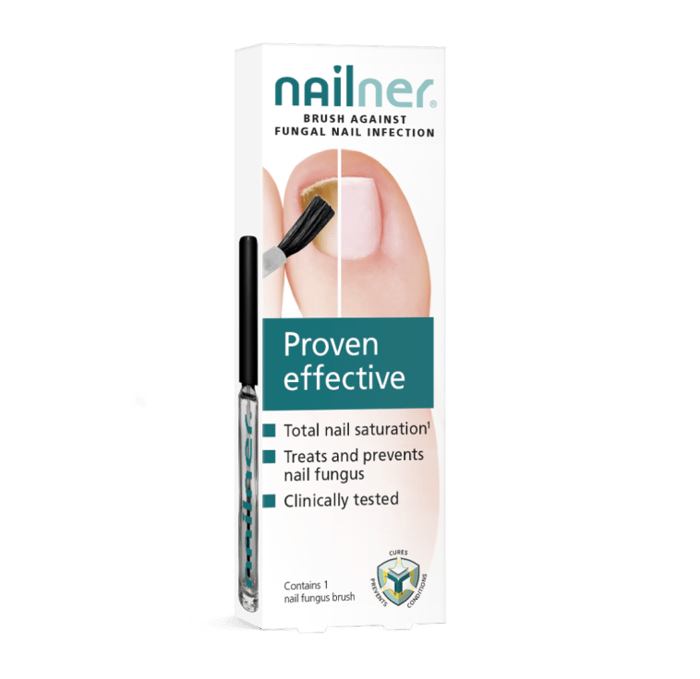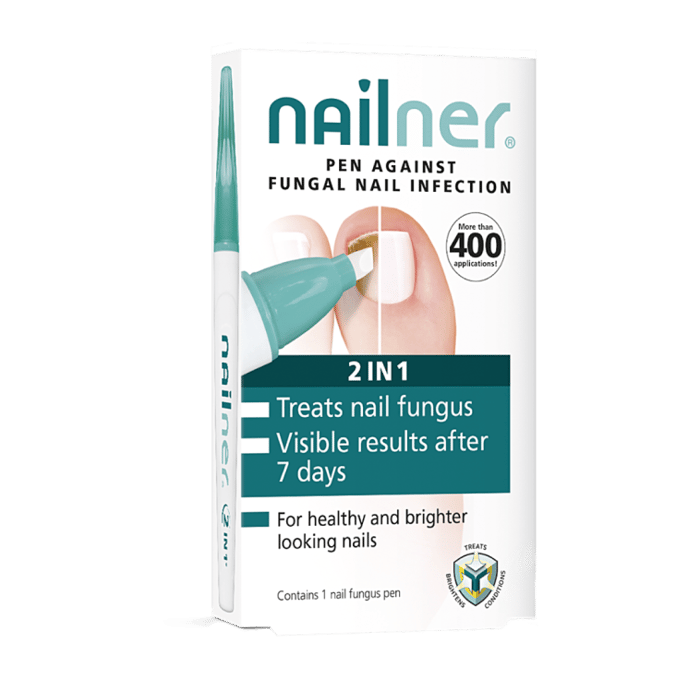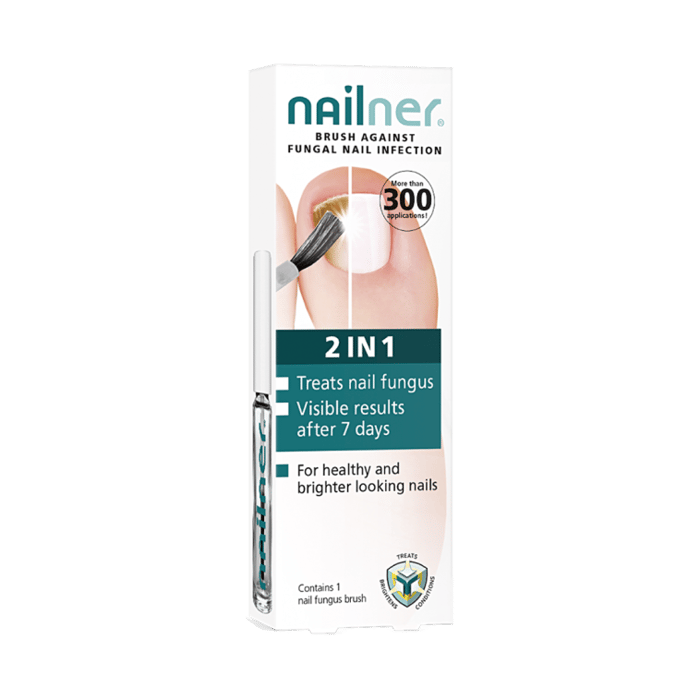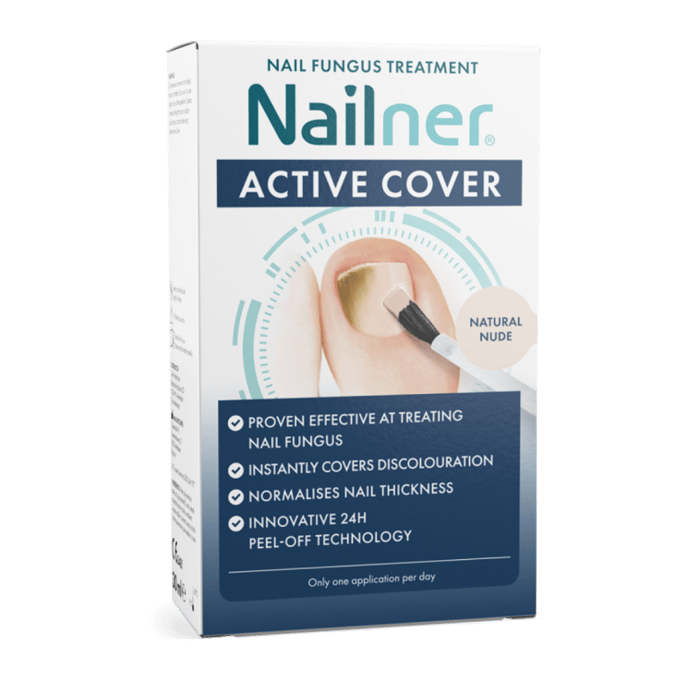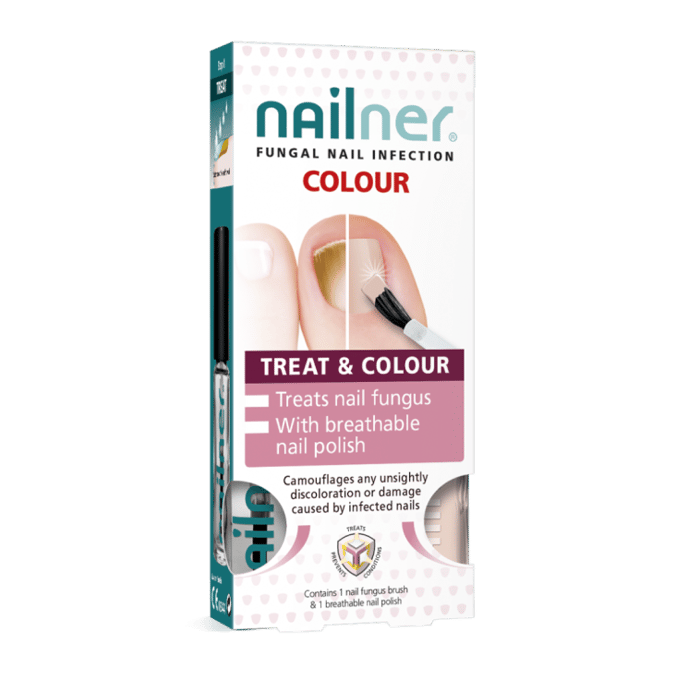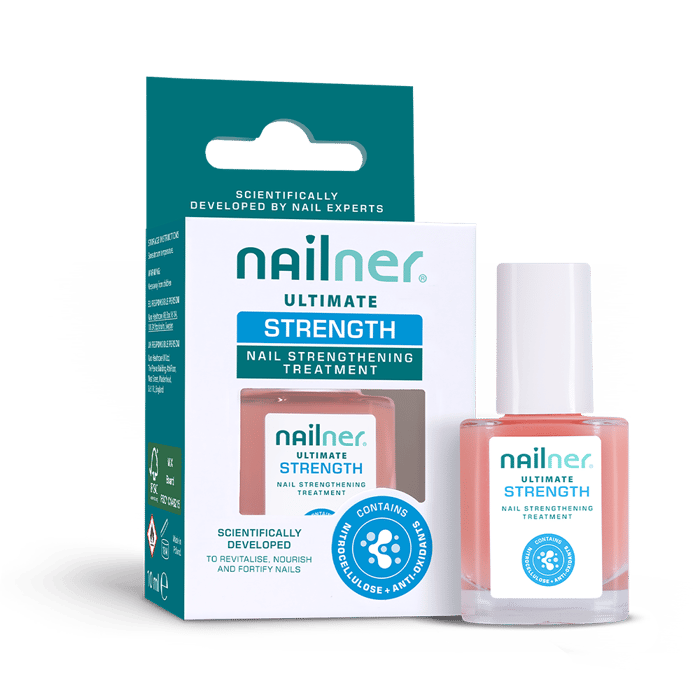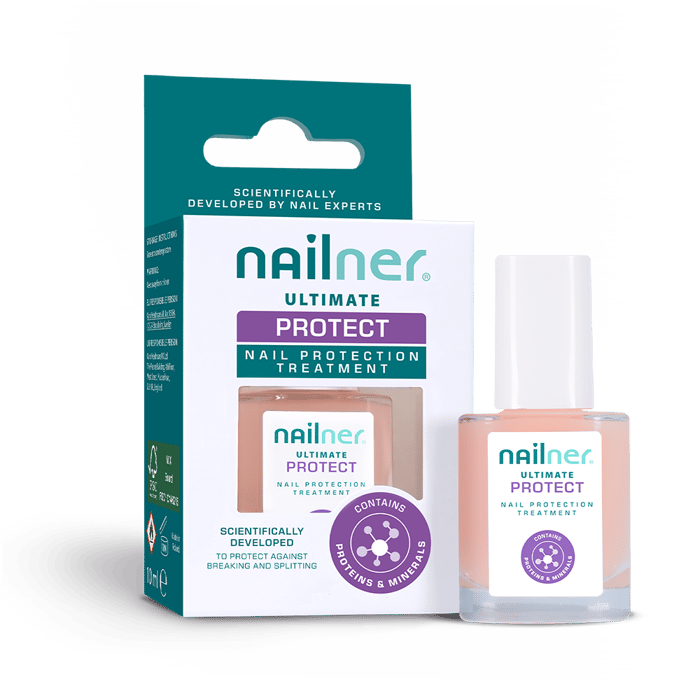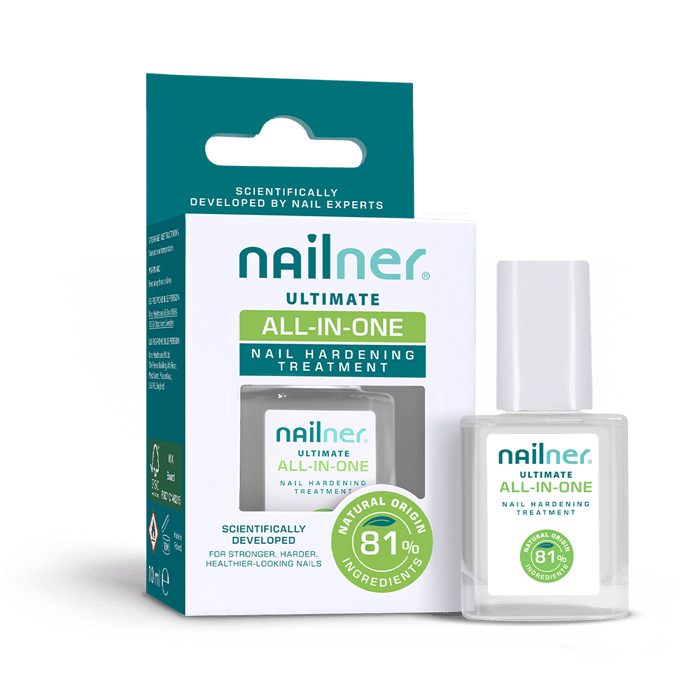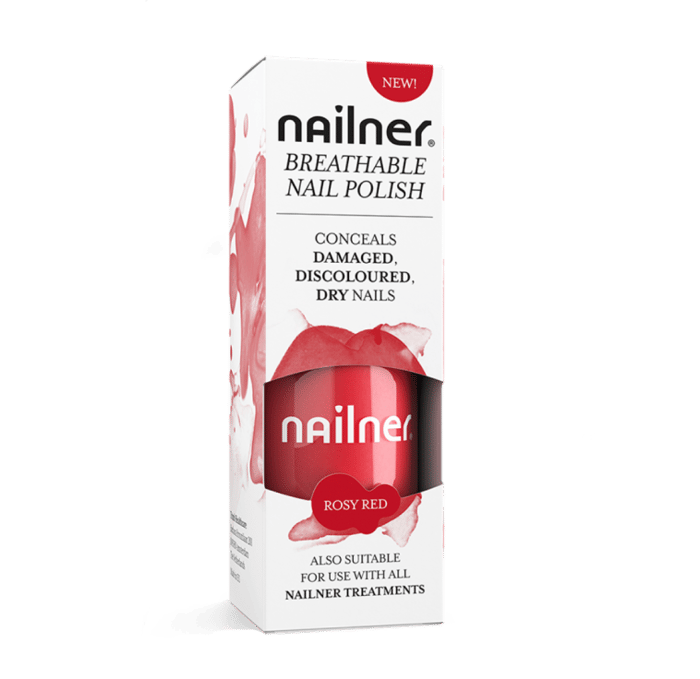About nail fungus
Nail fungus is an infection that gets into your fingernails or toenails through cracks or cuts in the skin. Also known as onychomycosis, fungal nail infections are incredibly common and usually nothing to worry about. That being said, if you do not seek out nail fungus treatment, the infection can get worse and may lead to your nail or nails falling off completely.
What are the different types of nail fungus?
There are several different types of fungal nail infections that you should be aware of, with some more common than others.
Distal subungual infection
This is the most common type of fungal nail infection, and it can affect both the fingernails and toenails. You can recognise this fungal nail infection by a jagged appearance on the outer nail and white or yellow streaks across the nail. This fungal nail infection also affects the nail bed.
White superficial infection
This type of fungal nail infection typically affects the toenails and manifests itself as white spots on the nail. If left untreated, this fungus will spread and cause white patches to cover the entire nail. This fungal nail infection may also cause flaking and crumbling of the nails.
Proximal subungual infection
The least common of the fungal nail infections, a proximal subungual infection can affect both the fingernails and the toenails. Typically, you will notice yellow spots at the base of the nail. This fungal nail infection is more prevalent in people with weakened immune systems.

What are the symptoms of nail fungus?
Nail fungus is fairly easy to identify once you know the most common nail fungus symptoms. These include:
- A bad odour coming from the nail
- A brittle nail
- A thickened nail
- Yellowing of the nail
- A distorted nail that may lift up from the nail bed
If left untreated, you may also start to experience some pain or discomfort and possible swelling of the area.
What causes nail fungus?
Fungal nail infections are caused by various fungi, with the most common one called dermatophyte. However, yeast and mould can also be responsible for nail fungus.
Older adults are more prone to nail fungus as their nails are usually more brittle and dry, which can sometimes cause cracks for the fungus to enter.
Toenail fungus often develops as a result of athlete’s foot and can easily spread from one nail to another. This can often be recognised by the toenail coming off the nail bed.
If you swim in public swimming pools without wearing protective footwear, you are also much more likely to experience fungal infections as nail fungus thrives in wet, warm, and moist environments.
For those with type 2 diabetes, nail fungus can be more serious and, when left untreated, can cause dangerous complications which can result in amputation.

How to diagnose nail fungus?
The quickest and easiest way to diagnose a fungal nail infection is by seeing if you have any of the symptoms listed above. If you do, then you are highly likely to have a fungal nail infection.
As this type of infection can be easily treated at home, there is no need to see a doctor for a professional diagnosis.
However, if you complete your anti-fungal treatment and you do not notice any signs of improvement or if your symptoms worsen, you should make an appointment with a healthcare provider for an official diagnosis and nail fungus treatment plan.
Who is more susceptible to nail fungus?
Anyone can get a fungal nail infection, but there are certain groups that can be more susceptible to this condition. These include:
- People with diabetes – type 1 and type 2
- People with poor circulation
- Those aged over 65
- People who wear artificial nails
- People who frequently swim in public pools
- Those with a nail injury or injury to the skin surrounding the nail
- People with a weakened immune system
- Those who wear ill-fitting or restrictive footwear
In terms of gender, fungal nail infections are slightly more common in men than women, but both sexes can be affected. If someone in your family is prone to fungal infections, then other members of the household are more likely to be infected also. It is also worth knowing that, even if you use a nail fungus treatment, the fungus can still come back.

What is the best nail fungus treatment?
You do not need to visit the doctor if you have a fungal nail infection, as the best nail fungus treatment is available over-the-counter.
Pharmacy nail fungus treatment is available as a cream, gel, spray, or powder that can be applied topically to the affected area.
Oral nail fungus treatment can be prescribed by your doctor.
Nailner Nail Fungus Treatment is highly effective and fast-acting and does not require a prescription. You can typically use these anti-fungal medications for between 6-12 weeks, but you won’t see the full results until your new, healthy nail has grown back.
For fingernails, this takes roughly six months, and for toenails, up to 18 months.
For optimum results, combine an oral anti-fungal tablet with a topical treatment. Nail fungus treatments available:
Anti-fungal nail polish
Your doctor may prescribe a medicated nail polish that can be used to treat and cover up the effects of nail fungus.
Foot and nail fungus cream
Your doctor may also suggest an anti-fungal cream that you rub directly onto the nails.
Laser treatment
In severe cases, your doctor may suggest laser treatment to get rid of stubborn or recurring nail fungus.
Drugs for nail fungus
There are prescription drugs for nail fungus that you can ask your doctor about if an over-the-counter treatment has not worked.
Surgery
Your doctor may suggest surgery to temporarily remove the infected nail and apply anti-fungal cream directly to the infection underneath the nail.

How to get rid of nail fungus naturally
If you would prefer to use a natural nail fungus treatment, there are several that you can try. However, it is important to know that these are not scientifically proven to treat nail fungus and are not as likely to successfully get rid of the infection as an over-the-counter anti-fungal medication.
Tea tree oil
There are many tea tree oil nail fungus studies that indicate that this essential oil can be effective in eliminating nail fungus. This is because tea tree oil has both anti-fungal and antiseptic abilities. To use tea tree oil as a nail fungus treatment, apply a small amount of undiluted oil directly onto the fungus.
Snakeroot extract
Snakeroot extract is a natural anti-fungal that has been shown to have promising effects on nail fungus. To use snakeroot extract as a nail fungus treatment, apply a small amount to the affected nail several times a week.
As mentioned before, none of the above have been approved as nail fungus treatments, so they should not be used as your sole method of eliminating the infection. However, if you want to try a natural remedy, all of the above are completely safe and can be tried alongside approved anti-fungal treatments and medications.

How to prevent fungal nail infections
As the saying goes, prevention is better than cure, so it is always a good idea to take preventative measures to reduce your risk of getting a fungal nail infection.There are several steps that you can take to prevent nail fungus from developing in your fingernails and toenails, including:
- Treat Athlete’s foot as soon as possible to avoid it spreading to your toenails
- Keep your feet clean and dry
- Wear clean socks every day
- Wear flip flops or other shoes to protect your feet in public swimming areas
- Throw away any shoes that you have worn during an infection
- Avoid wearing ill-fitting or restricting shoes that can cause friction
- Do not share nail clippers or nail scissors
- Make sure that your nail technician sanitises their tools
- Regularly trim your fingernails and toenails
- Use anti-fungal foot powders or sprays
Frequently asked questions
What kills nail fungus fast?
The fastest and most effective way to kill nail fungus is with an anti-fungal medication such as Nailner Nail Fungus Treatment. These over-the-counter treatments are applied topically to the affected area.
What happens if nail fungus is left untreated?
Untreated nail fungus can lead to several painful problems, including an inability to walk or wear shoes. The affected nail or nails may also completely fall off, causing pain or discomfort.
If you are embarrassed to go to the doctor or pharmacist for a nail fungus treatment, you can buy these online without the need to speak or show anyone your infection.
Will clear nail polish kill nail fungus?
Normal clear nail polish will not kill nail fungus. However, you can get anti-fungal nail polishes, such as Nailner Nail Fungus Treatment, which can be effective at treating fungal nail infections.
Is nail fungus a pathogenic bacteria?
The most common type of nail fungus called dermatophyte is a pathogenic bacteria. However, nail fungus can also be caused by yeasts, especially Candida albicans, as well as non-dermatophyte moulds.
Does having toenail removal cure fungus?
Toenail removal can help to cure fungus as it allows the anti-fungal medication to be applied directly to the infection. However, in most cases of fungal nail infections, this is not needed. Instead, apply an over-the-counter anti-fungal treatment as soon as you notice signs of infection.
How to get rid of nail fungus caused by acrylics?
If you regularly wear acrylic nails, then you are much more likely to experience fungal nail infections. This is because moisture can become trapped underneath the nails, which provides the perfect environment for fungi to thrive and grow.
To treat nail fungus caused by acrylics, you should use a nail fungus treatment such as Nailner. This should be applied topically to the affected area. If you are prone to fungal nail infections, then you should avoid false nails as much as possible.
Can nail fungus be cured?
Nail fungus can be treated, but there is always a risk that it will come back. To increase your chance of killing off nail fungus for good, combine an anti-fungal oral tablet with a nail fungus spray which should be applied directly to the affected nails.
How to treat nail fungus on hands?
Although nail fungus is more commonly found on the toenails as your feet offer a better environment for fungi to thrive, you can get a fungal nail infection in your fingernails.
To treat nail fungus on your hands, use the same anti-fungal medication that you would use on your toenails. One of the most effective over-the-counter nail fungus treatments is Nailner which you apply on the nail.

